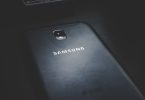Samsung Galaxy S20 phones are the latest flagship devices from Samsung. And these three devices are really impressive when it comes to performance. It comes with amazing specs and 120Hz display that only works in FHD+ resolution to give better battery life. But as soon as you switch to QHD+ display then the refresh rate will reduce to 60Hz automatically. Even reducing the Resolution to FHD+ from QHD+ while using the 120Hz will drain the battery faster. And as there is no manual option available on the phone to set the refresh rate to 90Hz. In this article, we will tell you about how to enable the 96Hz refresh rate on Samsung Galaxy S20/S20+/S20 Ultra.
As of now, there is no trick available to run galaxy s20 on QHD+ resolution with a 90Hz or 120Hz refresh rate. It may be possible after rooting but many other developers are still trying to figure out the method to get it done. But for those who want better battery life. when maintaining the high refresh rate then this guide is definitely for you. In my opinion, the 90Hz refresh rate is enough for a good experience and you won’t find much difference in 120Hz and 90Hz. So its better to reduce the refresh rate from 120Hz to get more battery life.
Contents [hide]
Enable 96Hz Refresh rate
You might be thinking that why the 96Hz and why not 90Hz. Well, the answer is simple and clear that Samsung Galaxy S20 phones support 4 different refresh rate modes that are 48Hz, 60Hz, 96Hz and 120Hz. So we can only switch between only these four refresh rate and not any other random number. However, you can easily switch to these refresh rates without even having root access on your phone. And this guide will work on all three phones Galaxy S20, Galaxy S20+, and Galaxy S20 Ultra.
How to Enable 96Hz Refresh Rate on Samsung Galaxy S20
As we know that Samsung flagship phones come with Snapdragon or Exynos chipset depending on the region. And after many benchmarks run and test it is for sure. That Exynos is not as powerful as the Snapdragon and so many users are opposing the decision to feature Exynos chipset on flagship devices. I would also love to see the same specifications in all-region as they are paying price for the flagship performance. The Exynos performs poorly when it comes to performance and to increase the battery performance you can reduce the refresh rate using this guide.
Here are some points that you should know before changing the refresh rate.
- You can only switch between 48Hz, 60Hz, 96Hz, 120Hz
- 96Hz & 120Hz will only work with FHD+ resolution
- Install ADB & Fastboot drivers on your computer
Steps to Reduce Refresh Rate to 96Hz on Samsung S20 Phones
This is a simple process and does not need to root access. But just make sure you have installed the driver on your computer.
- First open Settings on your Galaxy S20 phones.
- In settings open the About Phone option.
- Now click on the Software Information and then tap 7-8 times on the Build Number and it will then show “You are now a developer”.
- The above step will enable the Developer Options on your Galaxy S20. So to open it go to Settings > Developer Options.
- Now in Developer Options look for USB debugging and enable it.
- Open Command Window or CMD on your computer.
- Connect your Galaxy S20 phone to the computer using a USB cable. And if it asks for debugging authorization then allow it.
- Now enter the below command to check if the device is connected.
-
adb devices
-
- The above command will show the device id, which means the device is connected. And if it triggers a prompt then allow the debugging on your phone.
- Once the device is connected enter the below commands one by one to enable 96Hz display on Samsung S20/S20+/S20 Ultra.
-
adb shell settings put system peak_refresh_rate 96.0
-
adb shell settings put system min_refresh_rate 96.0
-
- The above command will enable the 96Hz display and you can check using any third party app.
So that is it, you have finally reduced the Refresh rate from 120Hz to 96Hz on your Galaxy S20 for better battery life.
Steps to Remove 96Hz Refresh Rate on Samsung S20 Phone
In case you want to switch to other available refresh rates or want to remove 96Hz then follow the below steps.
>> A normal reboot will remove the 96Hz refresh rate on your phone. And to enable it, again you need to follow the same steps given above.
>> You can also go to Settings and select either 60Hz and 120Hz and the 96Hz will be removed.
>> Another thing that you can do is just replace 96Hz to 48Hz, 60Hz or 120Hz in the ADB command given above.
That is it now you know how to enable all the available refresh rate mode on your Galaxy S20 device. We can see some new options in one of the upcoming update that may allow us to switch between refresh rates easily.
Conclusion
Alright, That was all Folks! I hope you like this Enable 96Hz Refresh rate article and find it helpful to you. Give us your feedback on it. Also if you guys have further queries related to this article. Then let us know in the comments below. We will get back to you shortly.
Have a Great Day!
Also See: How to Fix the Black Screen After Windows 10 Update






